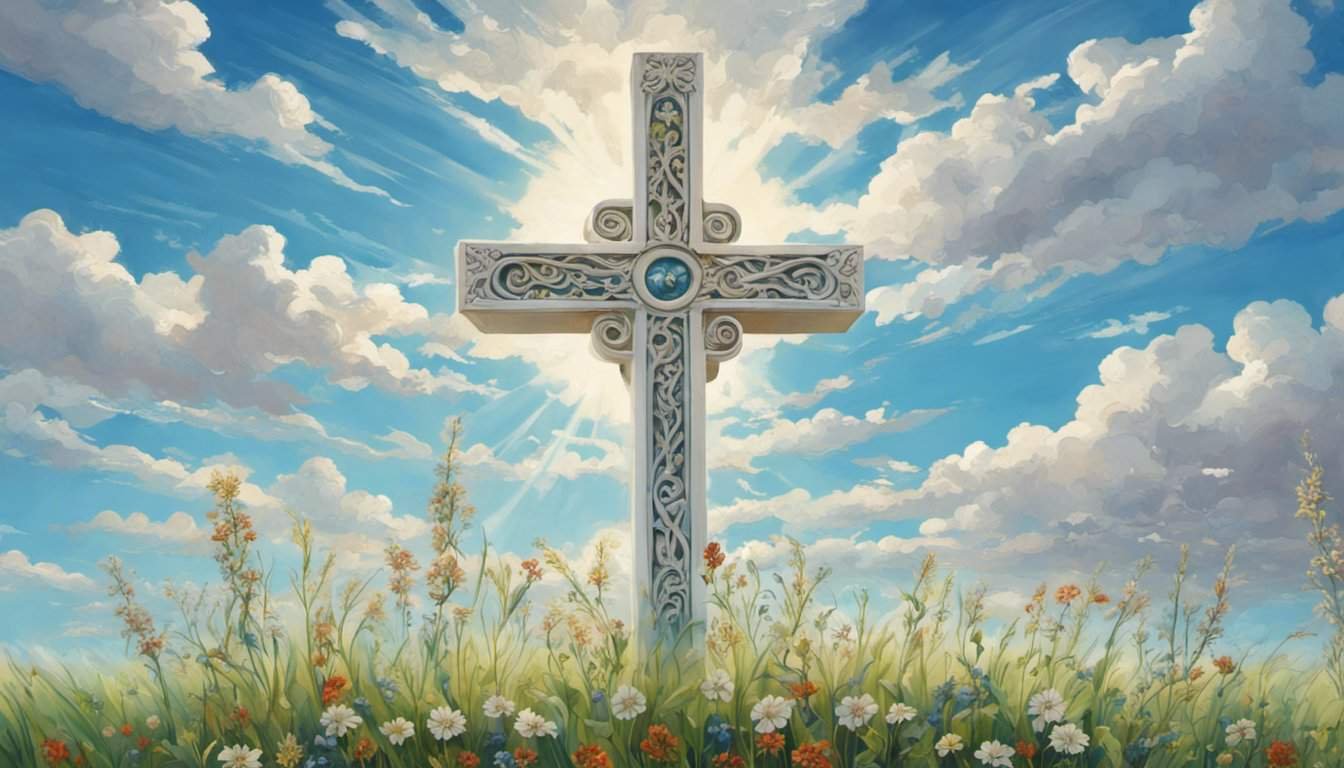In the heart of the wilderness, a remarkable story unfolds in Numbers 21 where faith and healing intertwine through the symbol of the bronze serpent. As the Israelites face daunting challenges, their journey highlights the profound connections between belief and divine intervention.
The bronze serpent stands as a timeless metaphor, reminding us of the power of faith in overcoming adversity. This article explores the significance of this biblical event, delving into its lessons and relevance in today’s world.

Join in uncovering how a simple yet powerful symbol can inspire healing and strengthen faith, offering insights that resonate across generations.
Overview of Numbers 21
Numbers 21 narrates the Israelites’ journey through the wilderness, highlighting key events that test their faith and resilience. As the people encounter various challenges, including scarcity of food and threats from surrounding nations, their trust in divine guidance becomes crucial.
Key Events
- The Bronze Serpent: When venomous snakes afflicted the Israelites, God instructed Moses to craft a bronze serpent. Looking upon it granted healing, symbolizing the power of faith and obedience.
- Conquests and Defeats: The chapter details victories against the Canaanite nations, illustrating the Israelites’ reliance on divine support for military success.
- Leadership Transition: The death of Aaron marks a significant leadership change, emphasizing the ongoing evolution of Israelite governance.
Symbolism and Lessons
- Faith as a Healing Tool: The bronze serpent serves as a reminder that faith can provide spiritual and physical healing in times of crisis.
- Obedience to Divine Commands: The Israelites’ compliance with Moses’ instructions underscores the importance of following divine guidance for community well-being.
- Resilience Amid Challenges: Despite hardships, the narrative showcases the Israelites’ perseverance, reinforcing the value of steadfastness in faith.
Contemporary Relevance

Understanding Numbers 21 offers insights into contemporary struggles, highlighting how faith and collective effort can overcome obstacles. The story encourages individuals to maintain trust in higher guidance and to seek healing through spiritual commitment.
Practical Applications
- Inspiring Community Support: Just as the bronze serpent provided healing, fostering a supportive community can lead to collective well-being.
- Emphasizing Leadership Roles: Effective leadership, grounded in faith, is essential for navigating modern challenges.
- Promoting Resilience: Building resilience through faith can help individuals and communities withstand and recover from adversities.
Scriptural References
- Numbers 21:8-9: “And the LORD said unto Moses, Make thee a fiery serpent, and set it upon a pole: and it shall come to pass, that every one that is bitten, when he looketh upon it, shall live.”
- Numbers 21:26: “He took Pilah out of the country of Edom, and redeemed it out of the hand of the Amorites; and the name of the city was called Palihah.”
These passages reinforce the themes of healing, obedience, and leadership, providing a foundation for applying these lessons today.
The Story of the Bronze Serpent
In Numbers 21, the bronze serpent stands as a powerful symbol of healing and faith. This story offers valuable lessons for navigating challenges today.
The Plague of Snakes
The Israelites faced a devastating plague of venomous snakes during their wilderness journey. These snakes caused widespread suffering, testing the community’s resilience and trust in divine guidance. The severity of the situation demanded immediate action and unwavering faith from the people.
Moses’ Intervention
Moses responded by following God’s instruction to create a bronze serpent and place it on a pole. Those who looked at the serpent were healed from the snake bites. This act required the Israelites to trust in a seemingly simple object for their salvation. Moses’ leadership and obedience played a crucial role in the community’s recovery, highlighting the importance of following divine directives during tough times.
Symbolism of the Bronze Serpent
The bronze serpent represents the intertwining of faith and healing. It serves as a tangible reminder of God’s provision and the power of belief in overcoming adversity. This symbol encourages individuals to maintain faith even when solutions appear unconventional or unclear.
Faith and Healing: Lessons from Numbers 21
This story teaches that faith can lead to both spiritual and physical healing. When facing challenges, turning to faith provides strength and guidance. The Israelites’ experience shows that resilience is possible through trust in a higher power, reinforcing the idea that faith can be a source of profound comfort and recovery.
Contemporary Applications: Faith, Leadership, and Resilience
Today’s challenges might differ, but the principles from Numbers 21 remain relevant. Building community support is essential for collective resilience. Effective leadership, grounded in faith, can inspire and guide people through uncertainties. Embracing these lessons helps individuals navigate modern hardships with confidence and hope.
Scripture Reference: Numbers 21:8-9 – “And the Lord said to Moses, ‘Make a fiery serpent and set it on a pole, and everyone who is bitten, when he sees it, shall live.’ So Moses made a bronze serpent and set it on a pole. And if a serpent bit anyone, he would look at the bronze serpent and live.”
Practical Tips for Applying Faith in Difficult Times
- Stay Connected with Your Community: Engage with supportive groups to share experiences and find strength together.
- Practice Obedience and Trust: Follow guidance, even when the path isn’t clear, trusting that it leads to healing.
- Embrace Resilience: Develop strategies to bounce back from setbacks, relying on faith as a foundation.
- Seek Inspirational Scripture: Regularly read and reflect on passages that reinforce your beliefs and provide comfort.
- Lead with Compassion: If in a leadership role, show empathy and understanding to those you guide, fostering a supportive environment.
By integrating these practices, individuals can cultivate a resilient and faith-filled approach to life’s challenges.
Symbolism of the Bronze Serpent

The bronze serpent in Numbers 21 represents a powerful symbol of healing and faith. It illustrates how belief and obedience can lead to salvation during challenging times.
Healing and Salvation
The bronze serpent served as a means for the Israelites to be healed from the deadly snake bites. When afflicted by venomous serpents, God’s instruction to Moses was clear: create a bronze serpent and lift it on a pole. Those who looked upon it were healed, providing a direct link between divine intervention and physical restoration. This act of healing underscores the importance of following divine guidance to achieve salvation. The specific method—crafting a bronze serpent—highlights the tangible steps required for spiritual and physical recovery.
Faith in Action
Raising the bronze serpent required the Israelites to demonstrate their faith actively. Instead of passively waiting for relief, they had to take concrete action by looking at the serpent. This act of looking signifies trust in God’s promise and the willingness to obey His commands. It wasn’t enough to believe; they had to act on their faith. This narrative encourages believers to engage their faith actively, showing that salvation often involves both belief and deliberate action.
Themes of Healing and Faith
The story of the bronze serpent in Numbers 21 highlights the profound connection between healing and faith. When the Israelites faced the threat of venomous snakes, their situation demanded both physical and spiritual restoration. God’s instruction to Moses to craft a bronze serpent provided a tangible means for healing, symbolizing the necessity of faith in divine intervention.
Faith played a crucial role as the Israelites were required to look upon the bronze serpent to be healed. This act demonstrated their trust in God’s promise and their willingness to obey His commands despite the apparent simplicity of the solution. The community’s response underscored the importance of collective belief and obedience in overcoming adversity.
Healing in this context extends beyond physical recovery. It represents the restoration of the Israelites’ relationship with God after their period of rebellion and hardship. The bronze serpent serves as a reminder that healing often involves both accepting divine guidance and taking deliberate action based on that faith.
Additionally, the narrative emphasizes resilience. Despite the challenges faced in the wilderness, the Israelites’ ability to heal and move forward depended on their steadfastness in faith. This resilience, grounded in trust in God, allowed them to navigate through trials and emerge stronger as a community.
The interplay between healing and faith in this story offers valuable lessons. It illustrates that true healing requires more than just remedial actions; it demands a deep-seated belief in and commitment to a higher purpose. By embodying both healing and faith, individuals and communities can achieve meaningful restoration and growth.
Theological Interpretations
The bronze serpent in Numbers 21 embodies several theological themes central to Judeo-Christian beliefs. Its interpretation varies across different theological perspectives, each highlighting distinct aspects of faith, obedience, and divine intervention.
Symbol of Salvation and Redemption
The bronze serpent serves as a prefiguration of salvation. By looking upon the serpent, the Israelites received physical healing, symbolizing the necessity of faith for redemption. This act mirrors the New Testament reference in John 3:14-15, where Jesus likens his crucifixion to Moses lifting the bronze serpent, indicating that belief in Him leads to eternal life.
Test of Faith and Obedience

Creating and lifting the bronze serpent required the Israelites to trust in God’s directive despite the absence of immediate understanding. Their willingness to follow Moses’ instruction demonstrated obedience, reinforcing the principle that divine commands often transcend human logic. Failure to comply resulted in continued suffering, emphasizing the consequences of disobedience.
Symbol of Divine Judgment and Mercy
The serpent-driven plague represented divine judgment for the Israelites’ complaints and lack of trust. The subsequent healing through the bronze serpent illustrated God’s mercy, offering a path to recovery contingent upon repentance and faith. This duality highlights the balance between justice and compassion in divine actions.
Covenant Relationship
The episode with the bronze serpent underscores the covenantal relationship between God and the Israelites. It reinforces the notion that adherence to God’s laws and trust in His provisions are essential for the community’s well-being. This relationship is foundational, shaping the Israelites’ identity and their understanding of divine expectations.
Typology in Christian Theology
Christian theologians interpret the bronze serpent as a type of Christ, drawing parallels between the serpent’s lifting for healing and Jesus’ crucifixion for salvation. This typology emphasizes continuity between the Old and New Testaments, illustrating how earlier events foreshadow New Testament revelations.
Practical Applications
- Faith in Action: Believers are encouraged to actively demonstrate faith through obedience, akin to the Israelites looking upon the bronze serpent.
- Trust in Divine Plans: The narrative teaches reliance on God’s guidance, especially during trials, fostering resilience and hope.
- Understanding Salvation: It provides a framework for comprehending salvation’s necessity and the role of belief in achieving spiritual healing.
Scholarly Perspectives
Various scholars examine the bronze serpent’s historical and cultural context, exploring its significance within ancient Near Eastern practices. Some argue that the bronze serpent was a common symbol of healing, repurposed within the Israelite faith to convey a unique theological message.
Contemporary Relevance

In modern faith communities, the bronze serpent symbolizes the enduring power of faith and obedience. It serves as a reminder that spiritual healing often requires trust in divine solutions, even when they appear unconventional. This interpretation encourages individuals to maintain faith amidst uncertainty and adversity.
| Interpretation | Key Aspect | Biblical Reference |
|---|---|---|
| Symbol of Salvation | Prefiguration of Christ’s sacrifice | John 3:14-15 |
| Test of Faith | Obedience to divine command | Numbers 21:8-9 |
| Divine Judgment | Punishment for disobedience | Numbers 21:4-7 |
| Covenant Relationship | Adherence to God’s laws | Exodus 19-24 |
| Typology in Christianity | Christ as the ultimate healer | John 3:14-15 |
The theological interpretations of the bronze serpent offer a multifaceted understanding of its role in biblical narratives, highlighting its significance in conveying deeper spiritual truths.
Relevance in Modern Context
Faith and healing remain integral aspects of contemporary life, mirroring the lessons from the Bronze Serpent narrative. Today’s challenges often test individuals’ resilience and trust in higher guidance, similar to the Israelites’ trials.
Strengthening Personal Faith
Building personal faith involves consistent practices that reinforce spiritual beliefs. Engaging in daily prayer, studying scripture, and participating in community worship can enhance one’s connection to the divine. For example, dedicating twenty minutes each morning to meditation on biblical texts fosters a deeper sense of purpose and trust.
Promoting Community Support
Communities thrive when members support one another through faith-based initiatives. Organizing support groups, hosting fellowship events, and offering counseling services create a network of encouragement. Effective community support not only aids in emotional healing but also strengthens collective resilience against adversity.
Emphasizing Obedience and Trust

Obedience to spiritual guidance can lead to profound personal growth. When individuals trust in divine plans, they navigate life’s uncertainties with confidence. Incorporating regular reflection on faith-driven decisions helps maintain alignment with spiritual goals. For instance, setting aside time each week to assess and align actions with personal beliefs ensures consistent adherence to faith principles.
Enhancing Leadership Through Faith
Leadership grounded in faith inspires and motivates others. Leaders who demonstrate integrity, compassion, and trustworthiness foster environments where individuals feel valued and supported. Implementing mentorship programs that emphasize spiritual growth equips leaders to guide with empathy and strength.
Fostering Resilience in Adversity
Resilience is cultivated through a steadfast belief in healing and renewal. Adopting strategies such as setting realistic goals, seeking spiritual guidance during tough times, and maintaining a positive outlook contribute to enduring challenges. For example, during personal setbacks, individuals can turn to scripture for encouragement and practical steps to overcome obstacles.
Practical Steps for Modern Healing
- Identify Personal Challenges: Recognize areas in life needing healing.
- Seek Spiritual Guidance: Consult with faith leaders or mentors.
- Engage in Healing Practices: Incorporate prayer, meditation, or fasting.
- Build a Support Network: Connect with community members for encouragement.
- Reflect and Adapt: Regularly assess progress and adjust approaches as needed.
Inspirational Scriptures
- “He heals the brokenhearted and binds up their wounds.” – Psalm 147:3
- “Trust in the Lord with all your heart and lean not on your own understanding.” – Proverbs 3:5
- “The Lord is close to the brokenhearted and saves those who are crushed in spirit.” – Psalm 34:18
Encouraging Active Faith
Active faith involves taking deliberate actions that reflect one’s beliefs. Volunteering, charitable giving, and community service are tangible ways to live out faith. Engaging in these activities not only benefits others but also reinforces personal spiritual commitments.
Utilizing Faith in Daily Life
Integrating faith into daily routines ensures that spiritual principles guide everyday decisions. Simple practices like starting the day with gratitude, practicing kindness, and seeking divine guidance in decision-making cultivate a lifestyle rooted in faith.
Conclusion

Maintaining trust in divine solutions amidst uncertainty fosters a resilient and faith-filled life. By strengthening personal faith, promoting community support, emphasizing obedience, enhancing leadership, and fostering resilience, individuals can navigate modern challenges with the same trust and healing illustrated by the Bronze Serpent.
Conclusion
The bronze serpent stands as a timeless symbol of faith and healing. It reminds us that even in the toughest times belief can lead to restoration and renewal. Trusting in a higher power often requires simple acts of obedience that can transform our struggles into opportunities for growth.
Today, the lessons from Numbers 21 inspire individuals to seek strength through their faith communities and embrace resilience. By committing to spiritual practices and supporting one another, we can navigate life’s challenges with the same hope and trust that sustained the Israelites. The story of the bronze serpent continues to encourage a faithful journey towards healing and connection.












